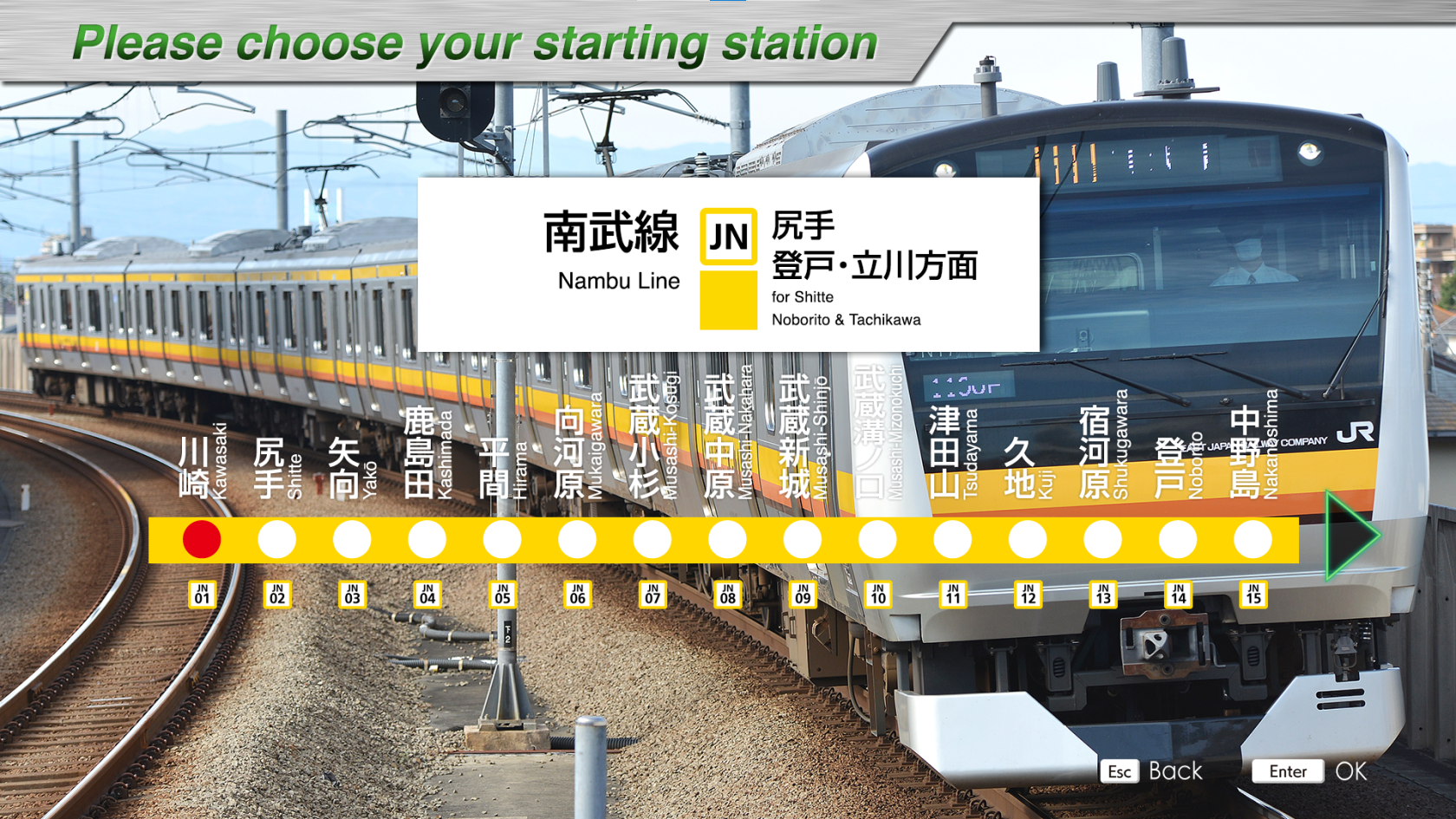Nambu Line
Introducing
The Nambu Line is a 35.5 km long line connecting Kawasaki Station in Kawasaki City, Kanagawa Prefecture and Tachikawa Station in Tachikawa City, Tokyo.
The predecessor of the Nambu Line was a private railroad company, Nambu Railway, which opened between Kawasaki Station and Noborito Station in 1927 for the purpose of transporting gravel from the Tama River. Later, in 1929, the entire line between Kawasaki and Tachikawa Stations, in its present form, was opened.
It is a commuter and school route that intersects with the Chuo Line rapid service radiating from central Tokyo, private railway lines, Yokosuka Line, Tokaido Line, and many other lines, connecting them in a circle, and is used as an important means of access between central Tokyo and the Tama region in the southern northern part of Kanagawa Prefecture.
Many electronics manufacturers and IT-related companies are located along the line, and the Musashi-Kosugi Station area is lined with high-rise condominiums as well as natural scenery such as the Tama River. The area is also characterized by many boat and bicycle racetracks and horse racing tracks.
In 2011, rapid transit service was restored for the first time in 32 years, and currently the fastest connection from Kawasaki Station to Tachikawa Station is 43 minutes.
Key data
- Line Length: 35.5 km
- Number of stations: 26
- Safety system: ATS-P
- Train model: E233-8000 series (6 cars)
- Max speed: 95 km/h
- Max speed after signals:
- Reduced speed (green/yellow): 75 km/h
- Caution (yellow): 55 km/h
- Speed restriction (yellow/yellow): 25 km/h
- Routes:
- Kawasaki ~ Tachikawa (603F): "Local" - 26 stations - 35.5 km
- Kawasaki ~ Musashi-Nakahara (843F): "Local" - 8 stations - 9.2 km
- Kawasaki ~ Tachikawa (4027F): "Rapid" - 26 stations - 35.5 km
- Automatic announcements: No
- Conductor announcements: Yes
- Driver announcement (pointing-and-calling): No
Features
When you're on the rapid line, you have to notify the conductor, using the buzzer (B key) when the train passes through a station.
Stations list
| Station name |
Japanese name |
Distance (km) | JRETS connections |
|---|---|---|---|
| Kawasaki | 川崎 | 0 |
JT Tōkaidō |
| Shitte | 尻手 | 1,7 | JN Nambu branch |
| Yakō | 矢向 | 2,6 | |
| Kashimada | 鹿島田 | 4,1 | |
| Hirama | 平間 | 5,3 | |
| Mukaigawara | 向河原 | 6,6 | |
| Musashi-Kosugi | 武蔵小杉 | 7,5 | |
| Musashi-Nakahara | 武蔵中原 | 9,2 | |
| Musashi-Shinjō | 武蔵新城 | 10,5 | JO Yokosuka |
| Musashi-Mizonokuchi | 武蔵溝ノ口 | 12,7 | |
| Tsudayama | 津田山 | 13,9 | |
| Kuji | 久地 | 14,9 | |
| Shukugawara | 宿河原 | 16,2 | |
| Noborito | 登戸 | 17,3 | |
| Nakanoshima | 中野島 | 19,5 | |
| Inadazutsumi | 稲田堤 | 20,8 | |
| Yanokuchi | 矢野口 | 22,4 | |
| Inagi-Naganuma | 稲城長沼 | 24,1 | |
| Minami-Tama | 南多摩 | 25,5 | |
| Fuchū-Hommachi | 府中本町 | 27,9 | |
| Bubaigawara | 分倍河原 | 28,8 | |
| Nishifu | 西府 | 30,0 | |
| Yaho | 谷保 | 31,6 | |
| Yagawa | 矢川 | 33,0 | |
| Nishi-Kunitachi | 西国立 | 34,3 | |
| Tachikawa | 立川 | 35,5 |
JC Ōme |
Movie
Useful links
Wikipedia: https://en.wikipedia.org/wiki/Nambu_Line
Driver's guide and timetables: https://docs.google.com/spreadsheets/d/1Jzx47I9DaAdVm43REOtTeUY_cp4islfIgMYW6-8V3ew/edit#gid=820524735

